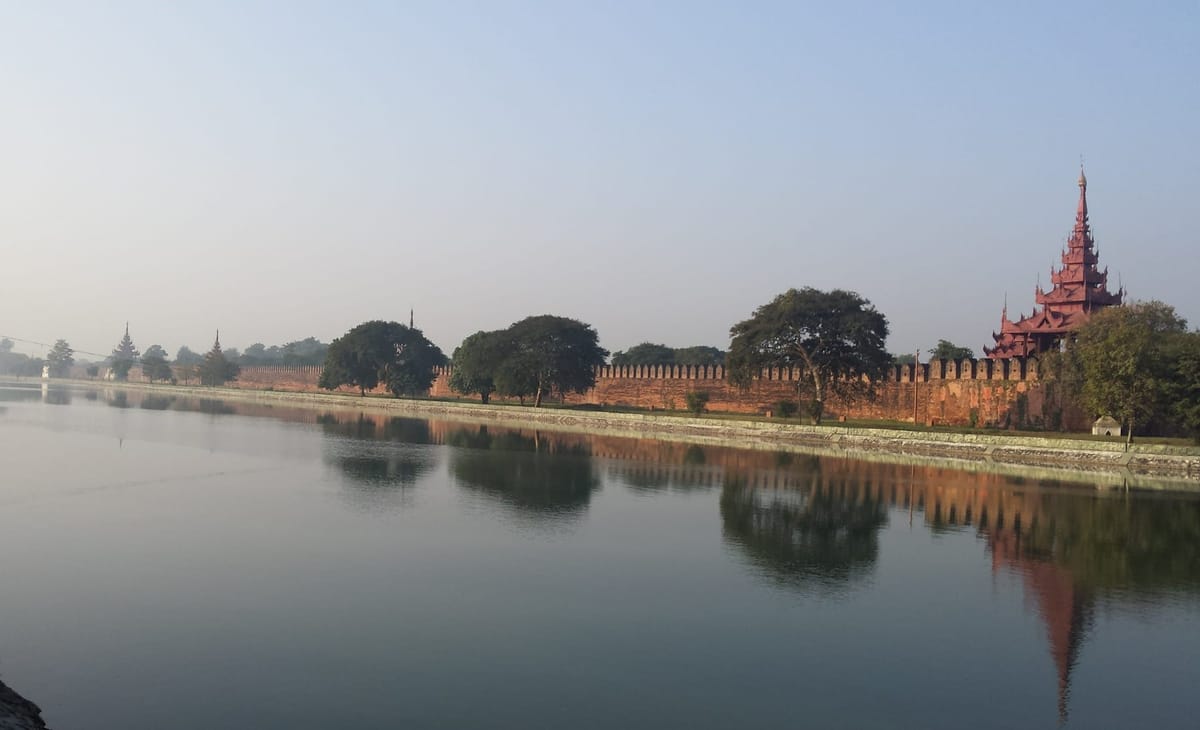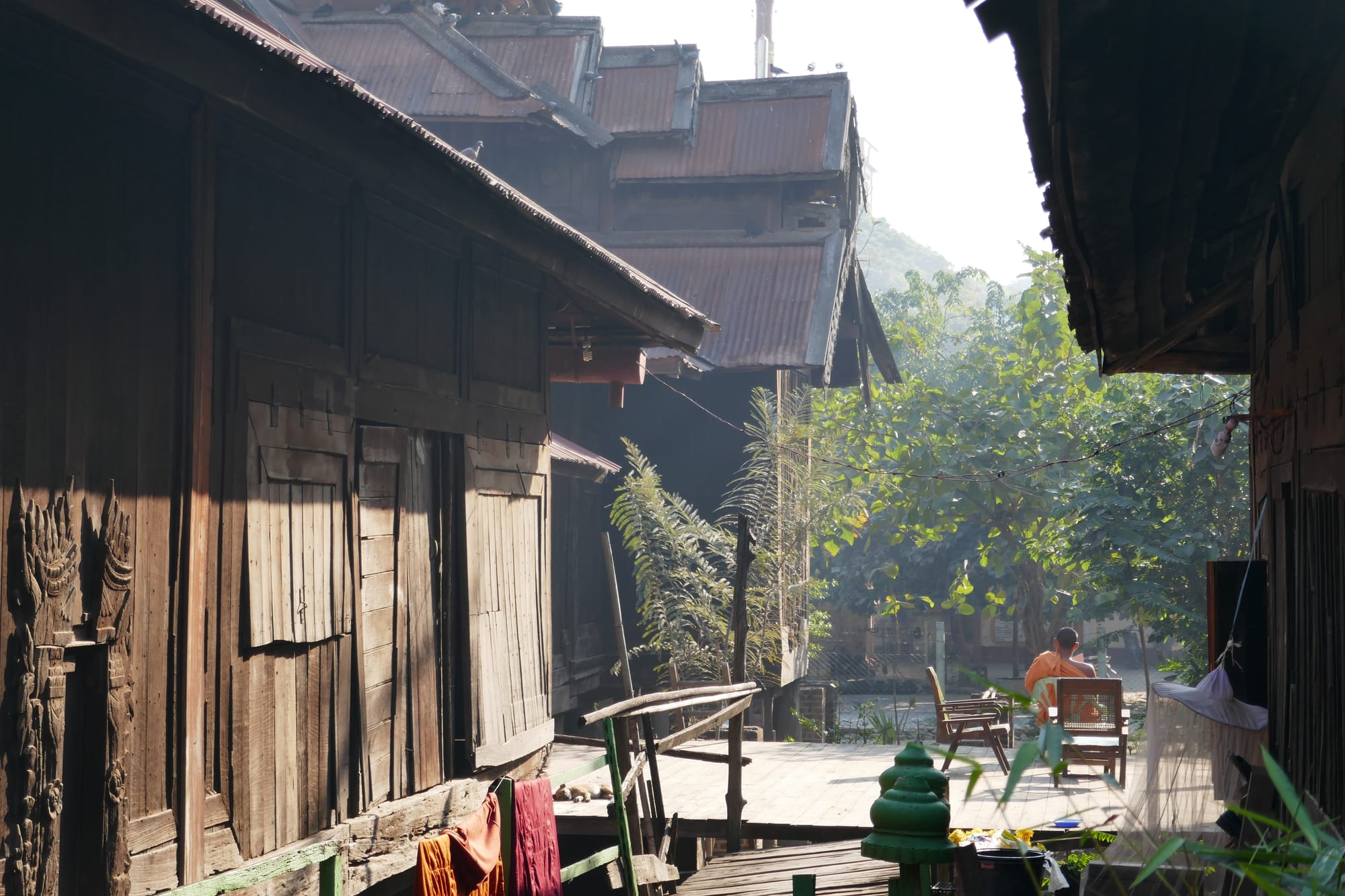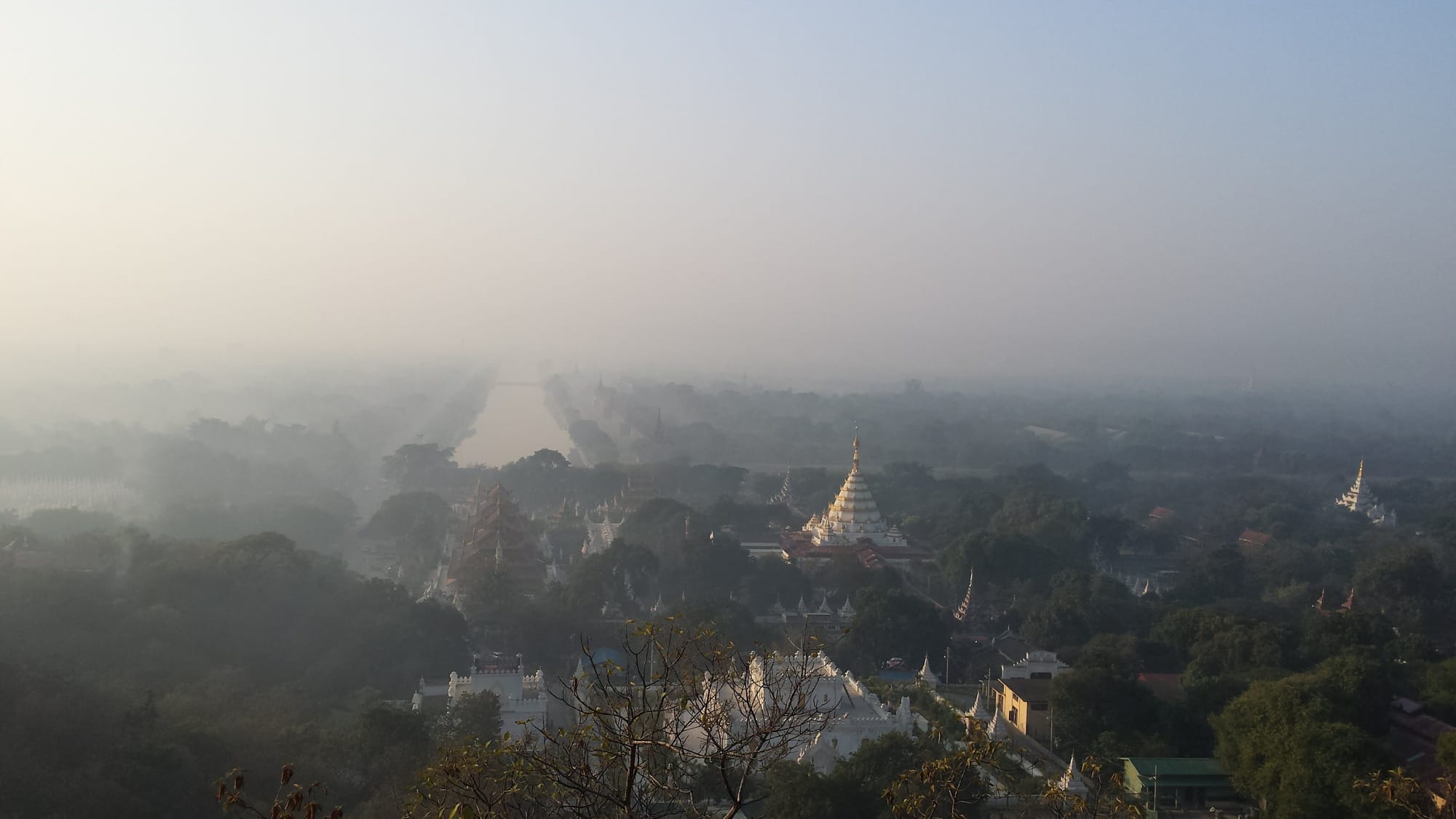City of elegies: the Mandalay earthquake

It’s five years now since I was last in Mandalay. A year of pandemic, and four years of civil war—protesters shot or disappeared, political assassinations and reprisals, guerrillas and paramilitary death squads clashing in the streets, thousands fleeing the city—must have left their mark. But I suppose that Mandalay on the morning of 28 March this year would still have been, on the whole, the same city I once knew.
Not any more.
After the biggest earthquake in living memory, one of the most powerful anywhere to strike anywhere in the world this century, Myanmar’s second city is now mourning the dead, though even after a month it has not yet finished counting them. With the city lying just a few miles from the epicentre at Sagaing, thousands were killed outright in collapsing buildings or trapped in the rubble, with rescue attempts in the days that followed hampered by lack of equipment, lack of expertise, lack of organisation, and by a military government that has long ago lost the trust of its people. With bodies left unburied, health and sanitation facilities damaged, and the baking hot summer giving way to the rainy season, disease is an ever-present threat, and the indirect death toll may yet climb further. Meanwhile, those whose homes are damaged or destroyed can expect little help rebuilding them. Recovery for Mandalay and the surrounding region will take a long, long time, and it will not bring back the dead.
For many of us around the world, recent history has been divided into two periods: before Covid and after Covid. For Myanmar, a bigger shock displaced that one: there was a world before the coup and after the coup. And for Mandalay, I suspect, that one too will be displaced; life events will be measured before and after the quake. Lost, irrecoverable worlds, nested one inside the other, like Russian dolls.
This has long been a city wrapped in memories, steeped in nostalgia for past versions of itself. The first time I visited, in 2013, a colleague told me, ‘You will not find much to interest you in Mandalay. It is a Chinese city now.’ She wasn’t objecting to an influx of Chinese people (though she was Chinese-Burmese herself) so much as Chinese money, and the new concrete hotels and malls that were erasing the city centre as she had known it in the 1990s.
Yet of course the Mandalay to which she harked back was, itself, one that had replaced older versions, lamented in their turn by older residents. Major fires in 1981 and 1984, and urban development following the economic reforms of the 1980s and 1990s, had already altered the city of the first decades after independence. Once, blundering around in the British Library catalogue, I ordered up a book entitled The Straight Lines of Mandalay, and found myself leafing through a collection of essays by Hsue Hgnet, reminiscing about the gentle, understated beauty of Mandalay in his youth in the 1970s. They were slow-moving, lyrical, loosely structured, and translated into an idiosyncratic Burmese English that only made them more evocative. I felt myself transported to the empty spot on the pavement where the elderly barrister in the chocolate-striped paso used to play the harp in the evenings under a vanished acacia. I shook my head wistfully at the billboard, once sponsored by the Vegetarian Society (‘Be Kind To Animals By Not Eating Them’), that now advertised soft drinks or face creams. I felt bereft on the site of the former music hall where, on one warm night long ago, every single note played by the song-and-dance troupe was forgotten amid the scent of the zun flowers in the hair of a girl called Wai Wai Than. The world of Hsue Hgnet’s youth was a beautiful one, and I mourned its passing with him.

Even to English speakers who have never visited, the city’s very name is redolent of a bygone age. Perhaps it’s because of Kipling’s poem, ‘Mandalay’, which is not about the city at all; it’s about imperial nostalgia, the longing that the narrator feels in the English drizzle for a country to which he will, it seems, never go back—his exotic Oriental fantasy relegated now to a fond memory. Or perhaps it’s because the other names most evocative of Myanmar’s colonial past—Burma, Rangoon, the Irrawaddy—aren’t used much any more, replaced with modern alternatives, while these three resonant syllables—Mandalay, Man-da-lay—remain as a link between an old world and a new one.
Yet this city that seems so deeply rooted in the past is a comparatively young one. Mandalay owes its very foundation to a time of epochal, near-apocalyptic change for the Burmese nation: and moreover, if it weren’t for an earthquake levelling another city, this one might not exist at all.
The quake of 1839 had turned the old capital city of Ava to rubble, just a few miles down the river, and forced the seat of government to move to a pre-existing but decidedly second-choice capital at Amarapura. The move was followed by the world-shattering experience of the Second Anglo-Burmese War in 1852-3: the war’s conclusion ripped Burma in two, its southern half annexed to British India, and left the northern rump of the Kingdom looking desperately for a new direction, a fresh start, a modernisation that might stave off the loss of what was left of its independence. Once again a symbolic new capital was needed, and King Mindon had the palace buildings in Amarapura dismantled and moved a few more miles upstream, onto a vast new site enclosed by high, turreted brick walls and a square moat a mile and a half on each side, forming the complex now known as Mandalay Palace.
Founded in 1859, this is a young city that carries a much older flame, successor to a series of Burmese royal capitals dating back over a thousand years. But like the last living person to remember a dying language, the last holder of a ceremonial rite, it was destined to be the end of the line. The British returned to finish the job in 1885; the Burmese monarchy was abolished, and the seat of power moved southward, never to return.
This loss, this absence, was to define the city forever after. Mandalay remained a centre of Burmese culture, and of monasticism, with the largest community of Buddhist monks anywhere in the country, and the population continued to grow throughout the twentieth century: but the sense of entanglement with the past, unable either to escape it or to revisit it, seems to have lingered.
The site of Mindon’s huge palace remains the focal point of the city, the starting point for its urban geography, but it is a civic void, a wall enclosing nothing. The British turned the palace into a military cantonment and an officers’ club, its splendours off-limits to Burmese citizens and slowly falling into disrepair, until the whole compound was destroyed in an RAF raid in 1945, during the last days of the Japanese occupation. After independence, the army held onto it; a fraction of the site is now given over to concrete facsimiles of the original buildings for tourists to visit, and the rest is a military base, with broad tree-lined avenues, officers’ residences, sports facilities, even a nine-hole golf course. Of the original structures, only the brick walls and the moat survived: a ‘silent witness’, as the official guide from the Department of Archaeology puts it, ‘of an order of things which has passed away forever.’

My colleague had warned me that Mandalay’s charms were long gone. But where locals notice recent changes, and the creeping globalised homogenisation that seeps even into a country that has spent much of its recent history in international isolation, visitors are apt to be struck instead by the things that haven’t changed. Some bland modernity is to be expected, but the features that are most noticeable are the ones that wouldn’t occur anywhere else. Whenever I stayed in Mandalay, I felt that I was observing the craft of Burmese urban life at a pitch of refinement that I hadn’t seen anywhere else, and it was pure joy.
In an airy, open-fronted shop soon after dawn I might have a bowl—sometimes two bowls—of superb mohinga, fish noodle soup, with fresh lime and coriander giving zest to the noodles and bean fritters in their rich, unctuous broth. At mid-morning I pursued wobbling, centimetre-thick noodles around a plate of nangyi thoke, rich with shallot oil, chickpea flour, sliced duck egg and crispy onion. In the afternoon I could come out of the university bookshop and spend several hours ensconced in a teashop, and then ask for the bill, only to be told that there was nothing to pay, that it was all on the house.
To sip milky tea that I could have ordered at least nine different ways, depending on my preferred proportions of tea, condensed milk and evaporated milk—to nibble on samosas and dough sticks and flaky little red bean pastries, while the ceiling fans turned steadily above me—to share a table with an old-school Mandalay gentleman in his neat red longyi and his velvet flip-flops, who wiped his glasses, folded his newspaper, and enquired in a polite sotto voce where I was from and whether I needed any help with anything, before padding off back to the notary’s office from which he had come—all of this was to disagree with my colleague. Mandalay was not a Chinese city. Mandalay was very much Mandalay.
Perversely, it is only because some of this essence of Mandalay had survived that I felt able to understand the nostalgia that suffuses those essays of Hsue Hgnet. He lamented the demise of the gentle ambience of the city he grew up in: but in fact, to the outsider’s gaze, much of it is still there, and it is this that gives us a sense of what might have been taken away. Describing the view of the city from the summit of Mandalay Hill in the early morning, he says:
The town is astir under the fog, and the corrugated-iron roofs of some new buildings are glistening like mirror-reflections. Formerly, Mandalay was surrounded by shades of greenery, lakes and fields; but some vestiges of that could still be seen. In the past, emerald waters flooded the lakes of Aung Pin Le and Nandar, and the green expanse of crops carpeted the fields …The bygone days of Mandalay, which nestled in the cool shades, were prudish and staid, while the Mandalay of the present, with its smooth asphalt roads in a jungle of concrete, is wanton and indecorous.

I could never have described Mandalay as wanton and indecorous, but I could imagine a bygone city in which its gentle decorum was even more pronounced, and be glad that it hadn’t all ebbed away.
It will be there still. Even before the quake, Mandalay felt like a kind of Tin Man of a city: it had a void at its heart, in the form of the huge empty square of the old palace, but in truth it was a kind and generous place. Those imposing palace walls, with only a menacing silence behind them, were testament to the way that Mandalay’s purpose as a royal capital had been subverted, first by a foreign power and then by a home-grown dictatorship. Yet in their shadow, the city had remained a centre of culture and learning and faith.
Now those walls have themselves been reduced to rubble in places, with their monumental gateways and watchtowers cracked or collapsed. Perhaps they will be rebuilt, perhaps not; either way another layer will be added to the palimpsest of memory and loss. But the city will survive, and so, I think, will the vestiges of the place Hsue Hgnet remembered. Mandalay has changed. Mandalay is still the same.
Although the immediate rescue efforts are over, donations are still desperately needed to provide humanitarian assistance to people affected by the disaster, and to support the work of reconstruction. If you can, please consider donating to https://www.myanmarearthquakehelp.com/en. By donating directly to volunteer networks like this, you'll be sending money directly to the communities that need it, bypassing the military regime.